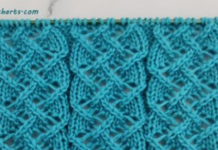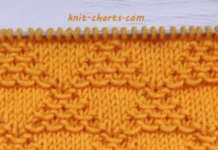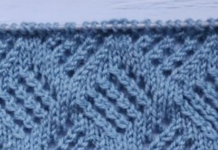Creating a crochet rose-patterned table runner with a modified crab stitch and a leaf base involves a series of steps. Here’s a simplified guide to get you started:
Materials needed:
- Crochet yarn in desired colors
- Crochet hook appropriate for your yarn weight
- Scissors
- Yarn needle
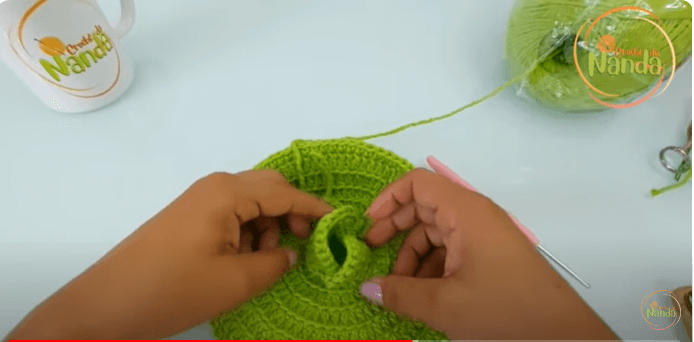
Steps:
- Choose Yarn and Hook:
- Select the yarn colors you want for the roses, leaves, and the runner itself.
- Choose a crochet hook that complements your yarn weight.
- Make the Roses:
- Begin with a magic ring or chain 4 and join to form a ring.
- Create the center of the rose by working single crochets and slip stitches into the ring.
- Gradually increase stitches to form the petals, alternating between single crochets and other stitches to create texture.
- Repeat the process for as many roses as you want on your table runner.
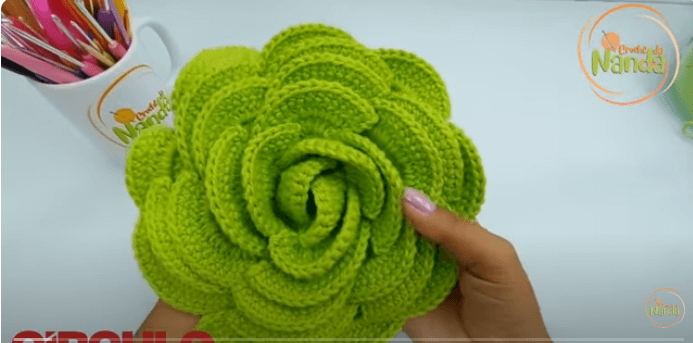
- Create Leaves:
- Crochet leaves separately. You can use a basic leaf pattern or find a specific crochet leaf pattern online.
- Attach the leaves to the roses by sewing or crocheting them together.
- Make the Table Runner Base:
- Decide on the size and width of your table runner and start crocheting the base using your chosen stitch (e.g., single crochet, double crochet).
- Keep the width consistent, and crochet until you reach the desired length.
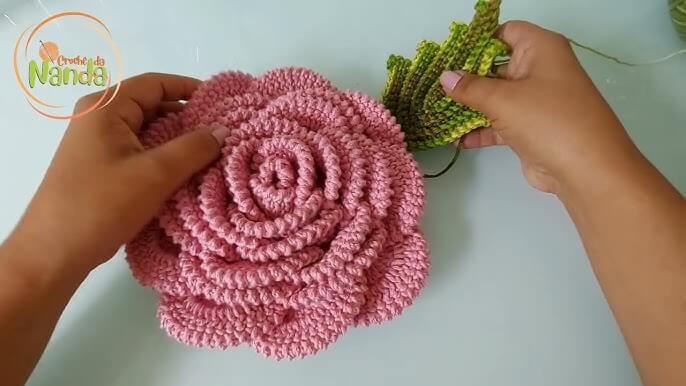
- Incorporate Rose and Leaf Motifs:
- Position the roses and leaves on the table runner where you want them.
- Attach each motif securely to the runner using a yarn needle or by crocheting them together as you go.
- Add Crab Stitch Border:
- Once all motifs are attached, add a crab stitch border around the entire table runner.
- The crab stitch (reverse single crochet) gives a nice, decorative edge. Work single crochet stitches in the reverse direction along the edge.
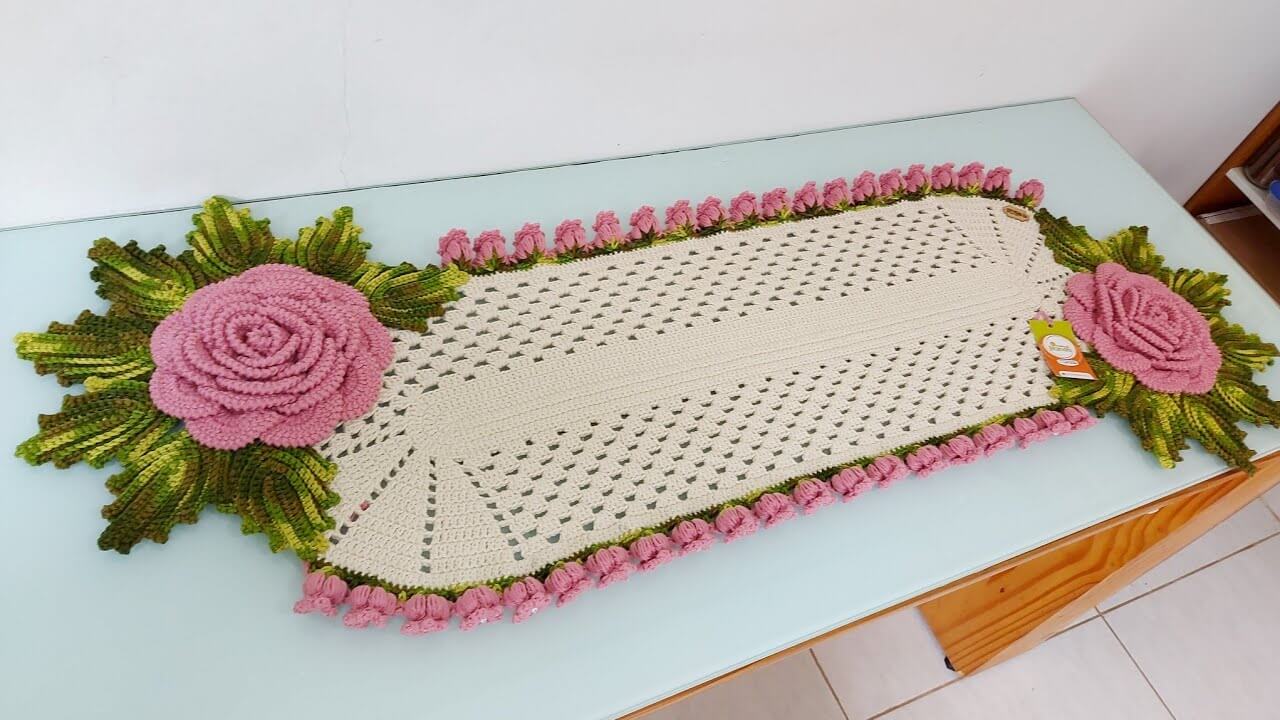
- Finish and Block:
- Weave in any loose ends, and block your table runner to shape it nicely. Blocking helps the stitches settle and gives your project a more professional look.
Feel free to adapt the pattern based on your preferences, and don’t hesitate to explore online resources or crochet communities for more detailed patterns and inspiration.

